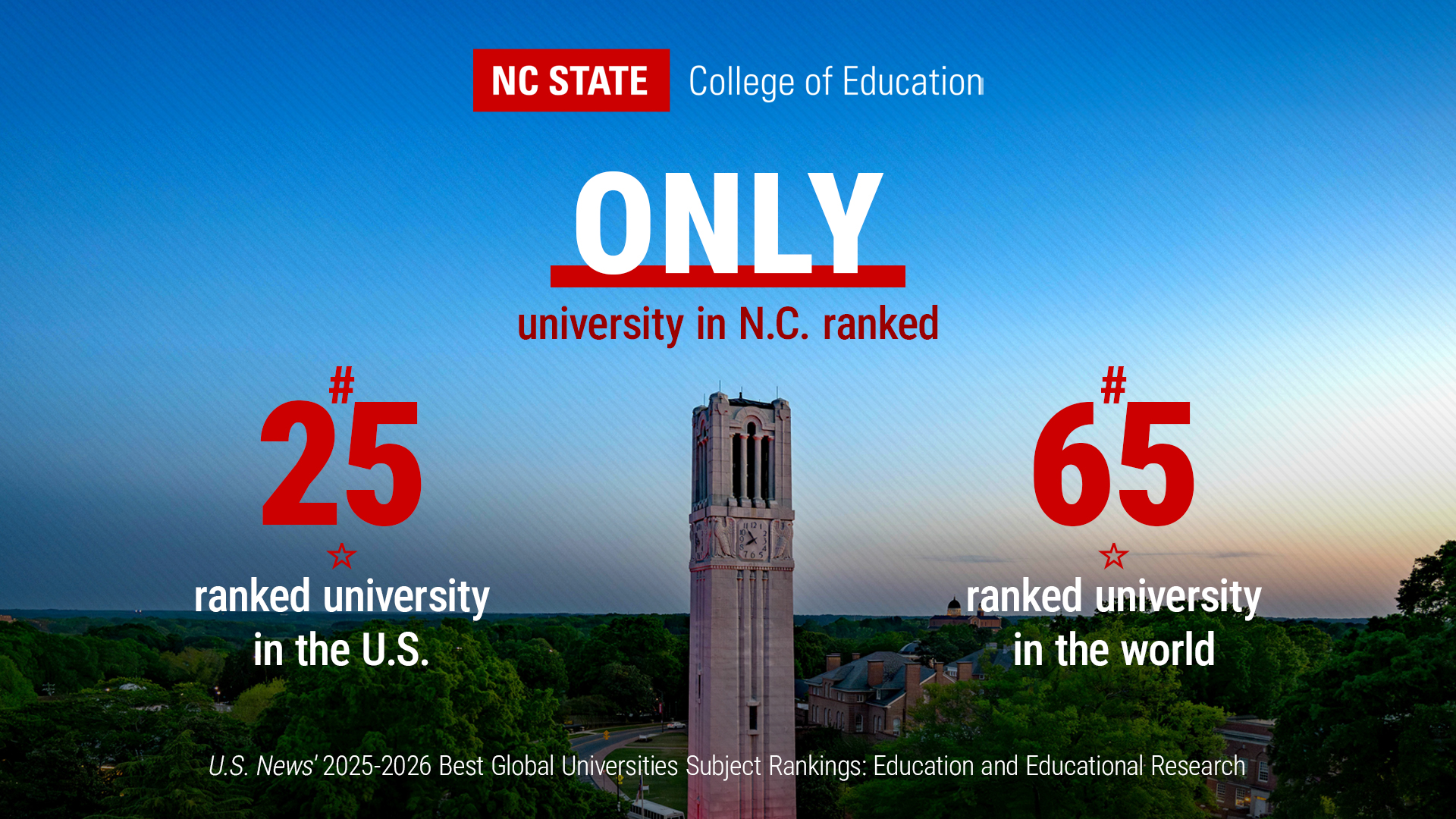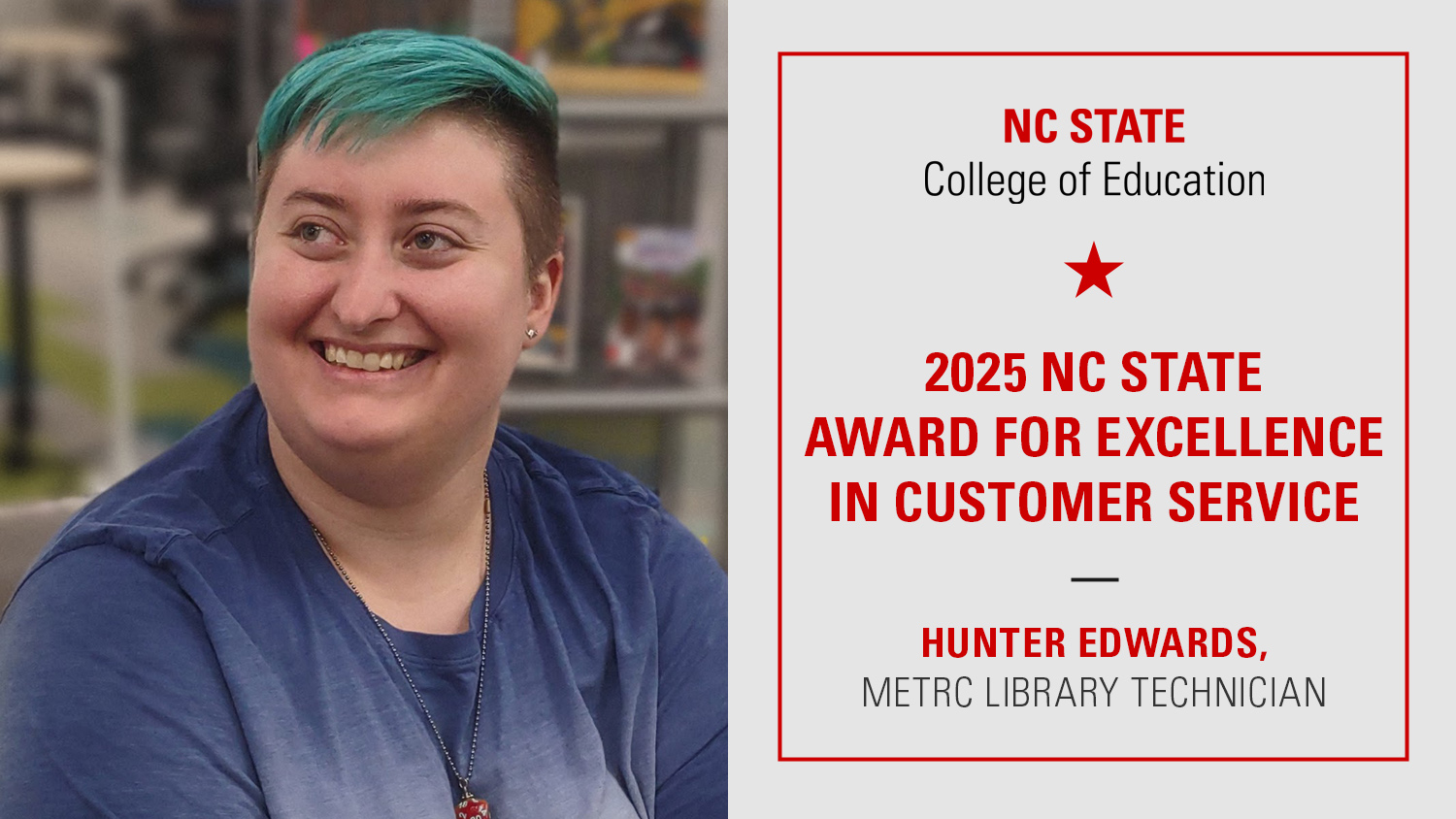‘Intervention Time and Space Should Support Teachers to Become Students of Their Students’: Associate Professor Jessica Hunt Discusses Award-winning Math Intervention Game, Offers Tips for Educators

The ways that students experience intervention programs matter, says Jessica Hunt, associate professor of mathematics education and special education in the NC State College of Education, who believes that an asset-based approach will better position learners through mathematics interventions.
Hunt is redefining the way mathematics interventions look through her award-winning Dream2B game and accompanying Model Mathematics Education (ModelME) curriculum. Sponsored by a grant from the National Science Foundation, the Dream2B game is helping students with learning disabilities and difficulties develop a better understanding of fractions while exploring real-world STEM fields.
Hunt will share this project on Nov. 2 at the National Science Foundation’s ITEST Project Directors’ Meeting, which will focus on technology innovations in STEM education that are designed for differently abled learners.
Dream2B, which centers disability through the use of universal design for learning while also centering race and culture, is already showing promising results with students, Hunt said.
“We’ve found significant impact within student increases in fraction conceptual understanding for students with and without disabilities, as well as increases on students’ end of course exams in the feasibility studies we ran this past spring,” she said. “Effect sizes were large. Teachers also reported the program is feasible and valuable as a supplemental intervention.”
In Dream2B, students play as a customizable character named Bunny who encounters six different worlds that relate to STEM and information and communication technology (ICT) careers, in which people with disabilities are often underrepresented. Since many of the schools Hunt has partnered with for the project are located in rural regions, an effort was made to pick careers that are accessible to those regions and show evidence of growth and upward mobility over the next decade.
The customization process for the character also allows students to select various race and gender options; the wrap-around curriculum provides opportunities for students to share stories from their individual lives and experiences.
“Students might share stories about experiences they’ve had at home sharing items with siblings before beginning gameplay that uses equal sharing to build concepts,” Hunt explained. “Students also discuss if they know or have seen people in their school, homes or larger communities who have careers that the game portrays, bringing in experiences of students who have family members who are in the varied STEM careers highlighted by the game and opening space for them to share their stories.”
Following gameplay, after-game tasks allow students to recreate strategies they’ve used and support them through various methods, including symbols, drawings, or models.
“This reflects the diversity of students’ experiences and ways of reasoning and celebrates them as opposed to reinforcing ability hierarchies and deficit language,” Hunt said. “It also positions students with disabilities as knowledgeable in the classroom, which historically has not been the case for these students.”
Creating Successful Mathematics Interventions
Hunt recently delivered a keynote speech at The Math Learning Center’s 2022 Intervention Leadership Conference entitled “Reframing Interventions as Asset-Based Learning Environments (ABLE): Structuring Space and Pedagogy.” In her talk, she discussed framing mathematics interventions to focus on how teachers can understand what students already know and use that to help them build knowledge and feel mathematically enabled.
These asset-based approaches, she said, build in time, space and opportunities for educators to build on each of their students’ strengths, lived experiences and their mathematical knowledge.
“When kids come to school, they bring their entire experience. Asset-based approaches promote connections because they embrace and acknowledge that fact,” she said. “I’d argue that intervention time and space should support teachers to become students of their students; to learn about kids’ experiences and knowledge, so they can give kids access to it in order to better their educational experiences. When we don’t do these things within intervention systems, we are denying students access and may instead be focused on deficits.”
Below, Hunt draws from her keynote speach to offer four tips for educators to use during their own mathematics intervention:
Give teachers time and space to get to know their students
Students learn by leveraging their experiences and learning from the experiences of others. So, to improve interventions, Hunt said it is important to make space and build in time so that teachers can become aware and pay attention to these multiple mathematics knowledge bases.
“This means that we should explicitly set aside space for teachers to get to know their students. Space can be opened within instructional time so that teachers can get to know more about students’ home and community lives. Teachers can get to know, for example, activities that students engage in and identify with inside and outside of schools and within their communities. They can talk with students about locations in students’ neighborhoods and/or surrounding the school that are familiar – these contexts often have potential for mathematical connections. Informal conversations can also help teachers to find out more about students’ dispositions toward mathematic, which are an important part of their overall math proficiency.”
Build space into core instruction to center and elicit student thinking so it connects to intervention
Eliciting and centering student thinking in math class and math intervention is central to asset-oriented approaches. For Hunt, that begins with core instruction. All of the models she has seen share something in common – they fit a student-centered time into every day of core math instruction.
“Number talks, number strings and problem solving are all routines that can create time within core instruction, so that students’ ideas are brought to the forefront. This centers students’ reasoning, gives teachers an informal, low stakes way to see how students think and reason and make note of it, and it can connect to the idea of bringing in opportunities for students to use their prior knowledge and experiences as a resource in school.”
Be intentional about whose knowledge is centered as students share their reasoning during intervention time
Hunt said educators should work to be intentional about whose knowledge, experiences and thinking is centered in math interventions.
“When thinking is shared, teachers should work to center the strategies and experiences of students with disabilities, students who are racially diverse and students who have multiple identities in these ways. To quote colleagues doing this work, we should work as well to bring those traditionally in the margins to the center and bring the brilliance of these children into discussion regularly.”
Give teachers tools and time to reflect on their practices
Teachers, Hunt said, need time to reflect and notice themselves and their practice. One of the many strengths teachers have is that they are lifelong learners.
“So, by nature, giving spaces and tools for us to look at, for example, who I am calling on during shares, who isn’t being called on and why, and what types of questions I am asking to support students and of whom. We can use tools like rubrics, planning times for collaboration or even affinity groups to be reflective of, not evaluative of, our practices in intervention and talk with each other about moves we are making to change the narrative.”
- Categories:


